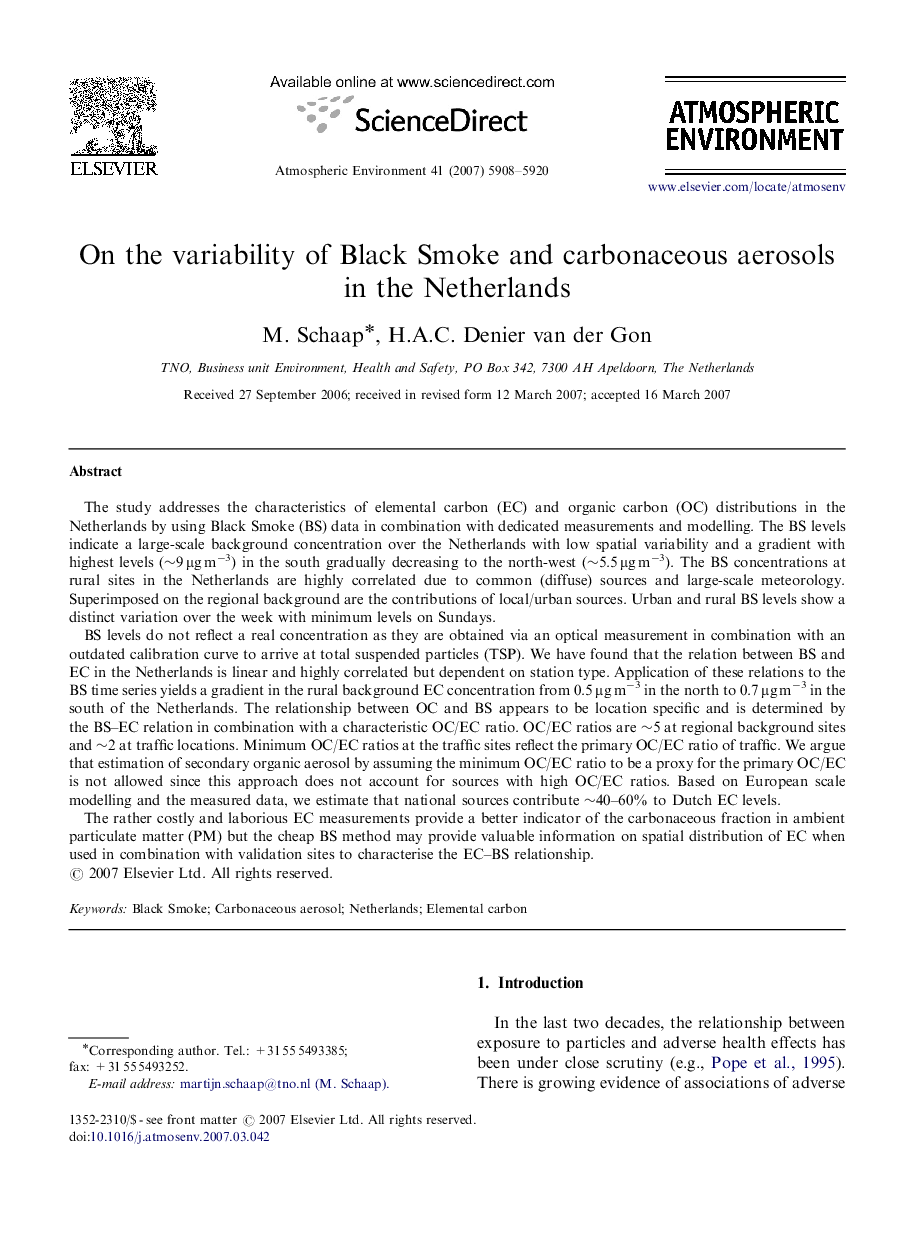| کد مقاله | کد نشریه | سال انتشار | مقاله انگلیسی | نسخه تمام متن |
|---|---|---|---|---|
| 4442572 | 1311157 | 2007 | 13 صفحه PDF | دانلود رایگان |

The study addresses the characteristics of elemental carbon (EC) and organic carbon (OC) distributions in the Netherlands by using Black Smoke (BS) data in combination with dedicated measurements and modelling. The BS levels indicate a large-scale background concentration over the Netherlands with low spatial variability and a gradient with highest levels (∼9 μg m−3) in the south gradually decreasing to the north-west (∼5.5 μg m−3). The BS concentrations at rural sites in the Netherlands are highly correlated due to common (diffuse) sources and large-scale meteorology. Superimposed on the regional background are the contributions of local/urban sources. Urban and rural BS levels show a distinct variation over the week with minimum levels on Sundays.BS levels do not reflect a real concentration as they are obtained via an optical measurement in combination with an outdated calibration curve to arrive at total suspended particles (TSP). We have found that the relation between BS and EC in the Netherlands is linear and highly correlated but dependent on station type. Application of these relations to the BS time series yields a gradient in the rural background EC concentration from 0.5 μg m−3 in the north to 0.7 μg m−3 in the south of the Netherlands. The relationship between OC and BS appears to be location specific and is determined by the BS–EC relation in combination with a characteristic OC/EC ratio. OC/EC ratios are ∼5 at regional background sites and ∼2 at traffic locations. Minimum OC/EC ratios at the traffic sites reflect the primary OC/EC ratio of traffic. We argue that estimation of secondary organic aerosol by assuming the minimum OC/EC ratio to be a proxy for the primary OC/EC is not allowed since this approach does not account for sources with high OC/EC ratios. Based on European scale modelling and the measured data, we estimate that national sources contribute ∼40–60% to Dutch EC levels.The rather costly and laborious EC measurements provide a better indicator of the carbonaceous fraction in ambient particulate matter (PM) but the cheap BS method may provide valuable information on spatial distribution of EC when used in combination with validation sites to characterise the EC–BS relationship.
Journal: Atmospheric Environment - Volume 41, Issue 28, September 2007, Pages 5908–5920